Whether you’re going on a family road trip or a visit to the vet, traveling in a car is an unavoidable part of every pup’s life. But no matter the reason, you’ll need to keep safety in mind and make sure that your canine rides comfortably.
While this is fairly easy to achieve for small pups, gentle giants… are a whole other story.
There are tons of challenges involved when traveling with a large dog, starting from getting over 50 pounds of fluff safely through the car door!
But don’t worry. We’ll help you do so below by sharing nine tips for managing a large dog in the car. We’ll then cover some general travel tips that will benefit any woofer.
How to Travel with a Large Dog in the Car: Key Takeaways
- Lots of owners enjoy taking their big dogs for car rides. But it’s important that you employ a few tips, tricks, and strategies to ensure everyone’s comfort and safety.
- Among other things, you’ll want to make sure your dog has a safe place to ride and that you monitor the car temperatures. You’ll also want to do things like bring plenty of water.
- There are also some general travel tips it makes good sense to embrace when riding with your dog. This includes things like providing your pup with plenty of pee breaks and getting him some exercise beforehand.
9 Tips for Managing a Large Dog in the Car
From investing in seat protectors to finding a comfortable restraint system, there are plenty of things to take into consideration when traveling with a gentle giant.
1. Consider Whether Your Car is Appropriate for a Big Dog or Not
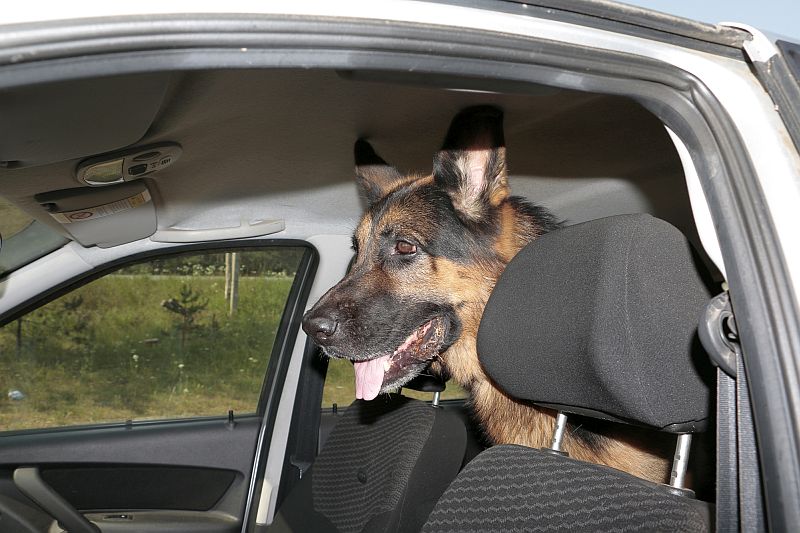
Before your pooch even steps into the car, you’ll want to make sure your vehicle can comfortably accommodate his size.
As a rule of thumb, you’ll want to make sure your dog can sit up, lie down, and turn around completely without having his movements hindered.
If he can’t do all of those things in the car, you’ll have to find an alternative means of travel.
You’ll also want to check whether he can easily get in and out of the car. Some big dogs, especially those with short legs like basset hounds, have a hard time jumping up and may require low floorboards and a ramp.
The entrance also shouldn’t be a tight squeeze – those with compact, two-door cars may find themselves faced with some challenges. Hatchbacks are ideal, as they typically provide a wide rear entry point.
The best cars for dogs are fitted with ample storage space, foldable seats, rear air vents, and childproof locks. You’ll also want upholstery material that’s easy to clean and doesn’t retain doggy odors.
2. Decide Where Your Dog Will Ride
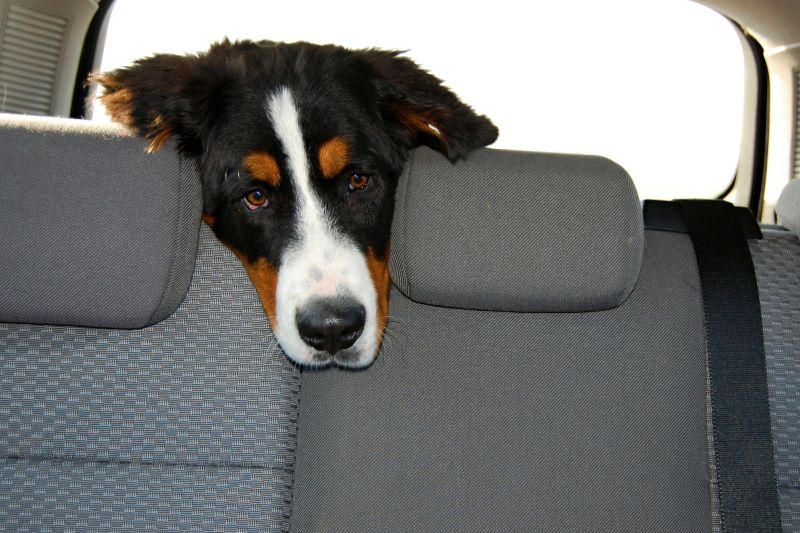
The rear seats and cargo area are the best places for a big dog to ride. Don’t let him sit with you at the front of the car, no matter how adorable he looks (resist those puppy eyes!).
It’ll almost certainly be too small of an area for him to sit comfortably, and he’ll also serve as a distraction while you drive.
The rear seats and cargo area both have pros and cons, so you’ll want to consider your decision carefully. We’ll try to help you decide below:
Pros and Cons of Dogs Riding in the Back Seat
Pros
- Your pooch can see you easily; ideal for big dogs with anxiety.
- The visibility also means you can keep track of your pooch. So, you’ll know straight away if he gets sick, agitated, or needs to relieve himself.
- Can easily use safety measures such as harnesses and seat belts.
- Lets your dog easily look out the window while driving. This may help prevent car sickness.
Cons
- Usually less space than the cargo area.
- Smaller entry point.
- Uneven surface area. Your dog may feel unsteady on his feet.
Pros and Cons of Dogs Riding in the Cargo Area
Pros
- Spacious; ideal for dogs that love to stretch out or move about.
- Since the cargo provides a flat, even surface, your pooch can also feel secure and easily keep his balance.
- Larger entry point.
- Can easily adjust the area to your dog’s liking. Add blankets, his bed, favorite toys, and anything else that will help him travel in ease.
Cons
- Tends to be the stuffiest part of the car, unless it’s a climate controlled cargo.
- Can’t see your dog easily.
- Not a safe option in SUVs and cars with a rear crumple zone.
3. Choose a Safe and Comfortable Restraint System
Nothing beats road tripping with your best friend, but it’s vital that you don’t get caught up in all the excitement.
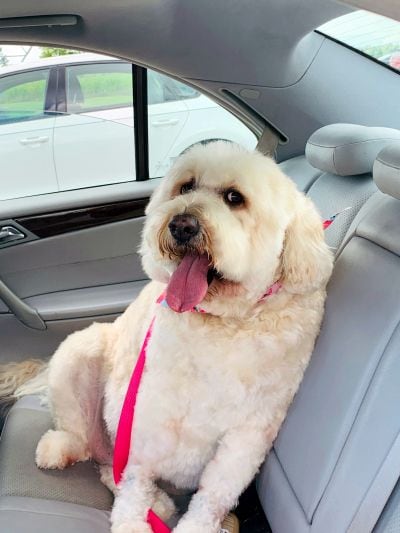
Just like humans, dogs need to have a restraint system that keeps them comfortable and safe.
Left unsecured, your pooch could lunge forward, attempt to climb on your lap, or hit the controls – all behaviors that can cause serious injuries for both him and your passengers.
And if the car crashes, it can have serious — possibly fatal — results.
According to Pet Pro Supply Co, if a car crashes at just 25 miles per hour, an unrestrained dog can be projected at a force around 40 times his weight.
So, now imagine the impact force of a large dog — it will no doubt be a deadly blow.
There are several safety restraint systems you can use, each unique and tailored to different needs. The three best options are:
- Dog Car Harnesses: Dog car harnesses attach to the car and keep your dog securely in place. It typically fits around the chest and upper body, and can be adjusted to suit your dog’s size. This is often considered the safest option as it helps spread the force of impact. However, harnesses offer less freedom of movement than other measures. Only buy a harness that has been crash tested (and has passed) by a third-party group.
- Dog Car Crates: Crates that are specifically designed to absorb shock and keep your pup secure, these are good options for dogs who experience neck or back problems (a harness can exert sudden pressure in an accident). Just make sure you pick a crate large enough for your big pooch!
- Dog Seat Belts: Essentially a seatbelt that clips into a car buckle, but designed for a dog’s size and body shape, dog car seat belts allow for more freedom of movement than a standard harness, making it a suitable option for dogs who can’t settle down easily.
Whichever option you pick, always make sure the system is secure, durable, and properly installed. If these aren’t feasible due to the layout of your car or where your woofer is sitting, you can instead consider a car barrier or tethering your doggo to hooks in the back with a leash.
These measures will both keep your dog out of the way and also prevent him from flying forward in an accident.
4. Consider a Ramp or Stairs
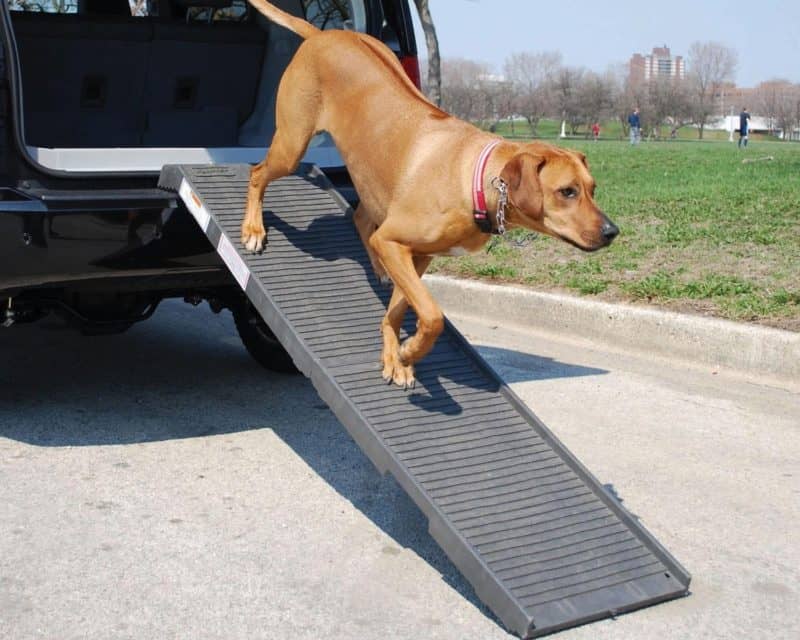
A car ramp makes the process of getting your pooch in and out of the car a whole lot more convenient and safer. It’s also easier on your dog’s joints; repeatedly jumping can cause unnecessary strain and lead to potential injuries.
There are plenty of dog car ramps and stairs on the market, but you can also make a DIY dog ramp if you prefer.
You’ll want to make sure that whichever one you get is durable, portable (can be folded up and stored easily), and can accommodate your dog’s weight. The material should also be slip-resistant.
In many cases, you can choose a ramp or stairs — whichever one you think will work best. However, senior dogs and pooches with joint problems will usually prefer a ramp to stairs.
5. Consider Warning Signs
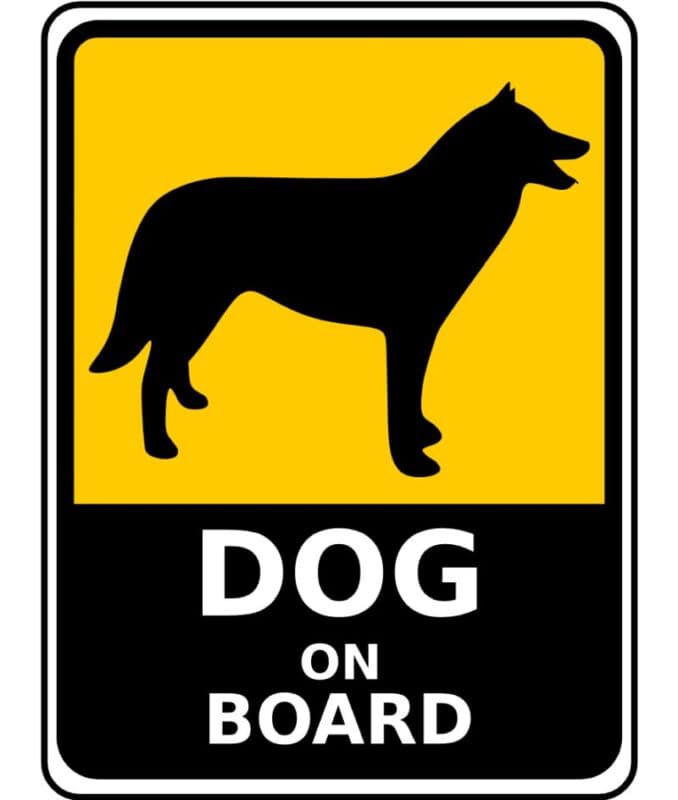
Some people, especially small kids, are frightened by large dogs. So, while it’s not strictly necessary, it’s a good idea to add a “warning sign” sticker informing those around you that there’s an oversized pup on board.
This will be especially useful if your pooch has a bad habit of jumping out immediately as soon as the car door opens; the sudden movement can startle and distress people who are afraid of dogs.
6. Be Careful When Exiting the Car
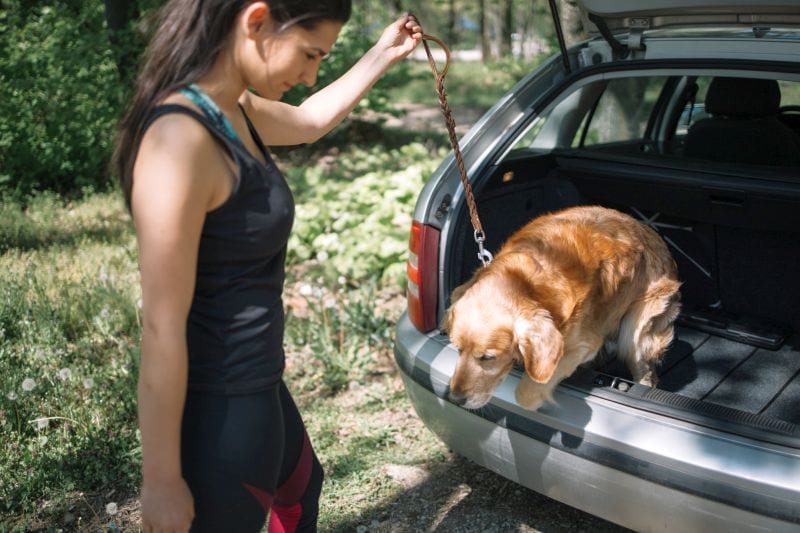
As we mentioned above, some dogs can’t resist jumping out and embracing the world once the car door opens. While this can look incredibly cute, it does come with risks and should be prevented. Your dog could injure himself, accidentally frighten or bump into someone, or even run off.
You’ll need to be careful and ensure you maintain a tight hold of your pup when exiting the car. Your restraint system can also affect how exactly you approach it. For example, if your dog is in a harness, you’ll need to first attach the leash, place down the ramp, and then unbuckle him.
It may also help to play some impulse-control games with your dog, so that it’s easier to get him to wait until you’re ready before he jumps out.
7. Consider Seat Protectors
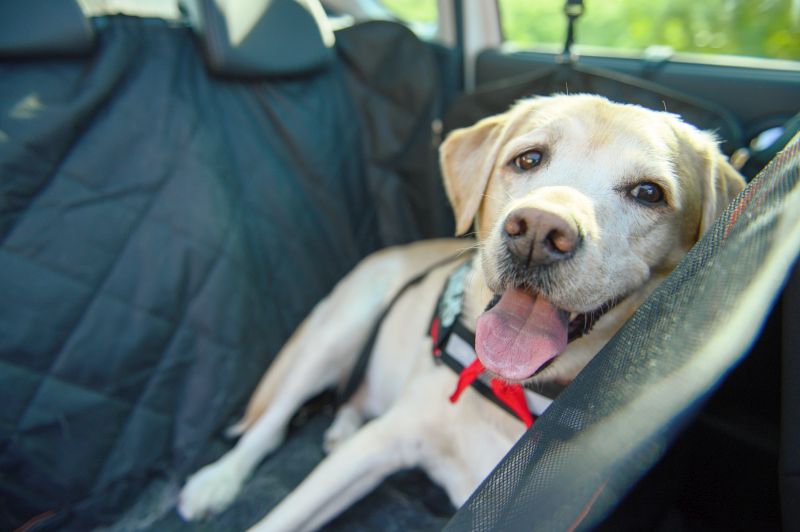
It’s an understatement that dogs are messy. And when it comes to canines, the bigger the size, the bigger the mess! They shed, drool, chew, scratch, and spread mud and debris everywhere. All these things aren’t exactly… ideal for your car.
If you don’t want your seats to be left looking like a battlezone, you’ll need to invest in some high-quality seat protectors. The best kinds are easy to clean, waterproof, don’t retain odors, and come with adjustable straps.
8. Consider Grabbing a Dog Gear Bag
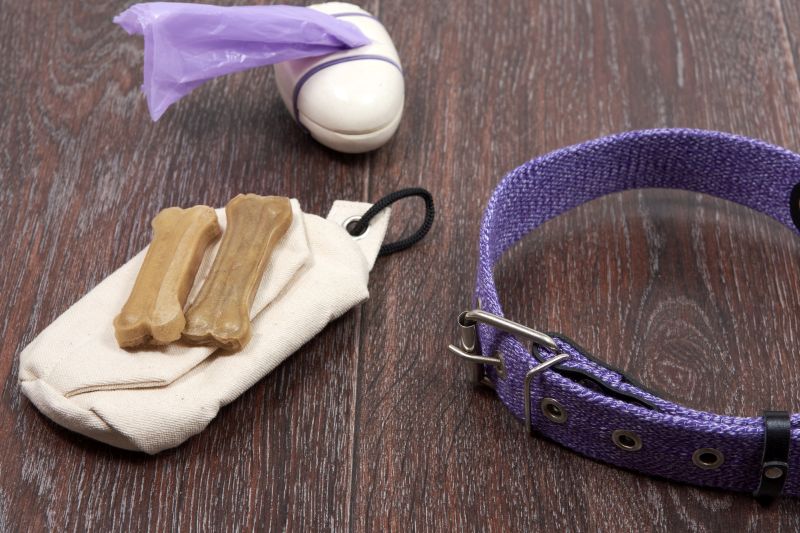
While you can get away with not having a dog gear bag for a small pup, a big dog is a whole different matter. The travel supplies large dogs need are a lot bigger, bulkier, and take up more space, so a bag is a really good idea.
A dedicated, size-appropriate gear bag or backpack will be immensely useful, especially if you’re going on journeys with your gentle giant.
9. Scope Out the Location Beforehand
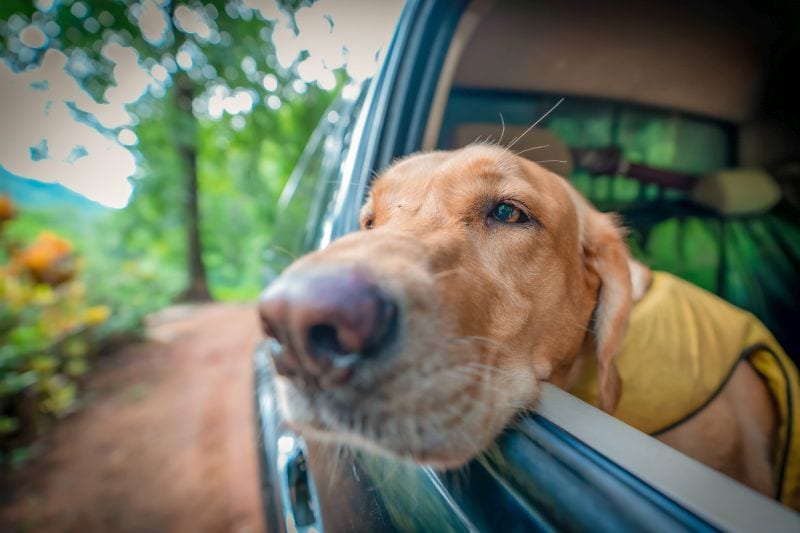
While it’s fun to take your woofer on day trips to new and exciting places, it’s always wise to scope out the area beforehand.
Some places may have narrow pathways which can be difficult for a big breed to navigate, while others may have actual size limits enforced (e.g. a park for small breeds). If your dog is reactive to people or certain objects, you’ll also want to make sure you know which paths best avoid these triggers.
Can’t scope out a location in person? You can instead look for photos of the place, check out its website, and hop into Google Earth. You can also speak to friends or colleagues who have been to the area.
General Car Travel Tips for Any Dog
While these car travel tips aren’t specific to large dogs, they’re still important to keep in mind.
Provide Plenty of Potty Breaks
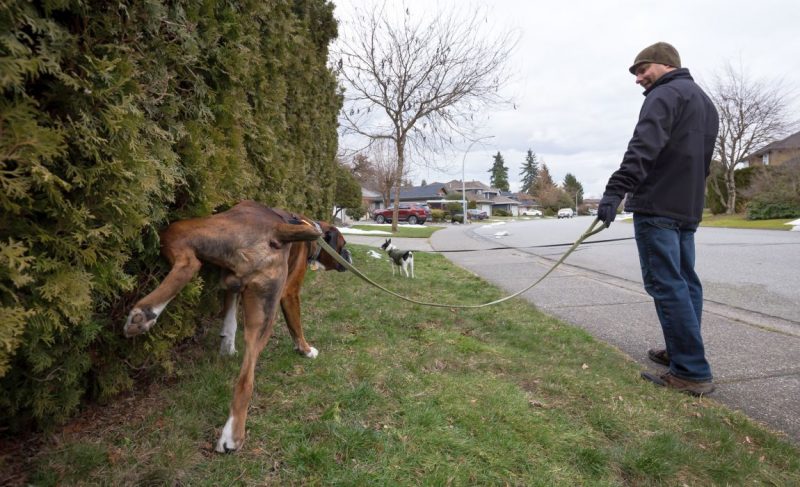
You should always let your dog relieve himself before a car trip, and if the journey is going to be long, make sure to stop for plenty of potty breaks. This will help your pooch feel more at ease while minimizing the chances of an accident occurring.
The breaks will also give him time to stretch out and enjoy the fresh air.
Feed Your Dog Several Hours Before Driving
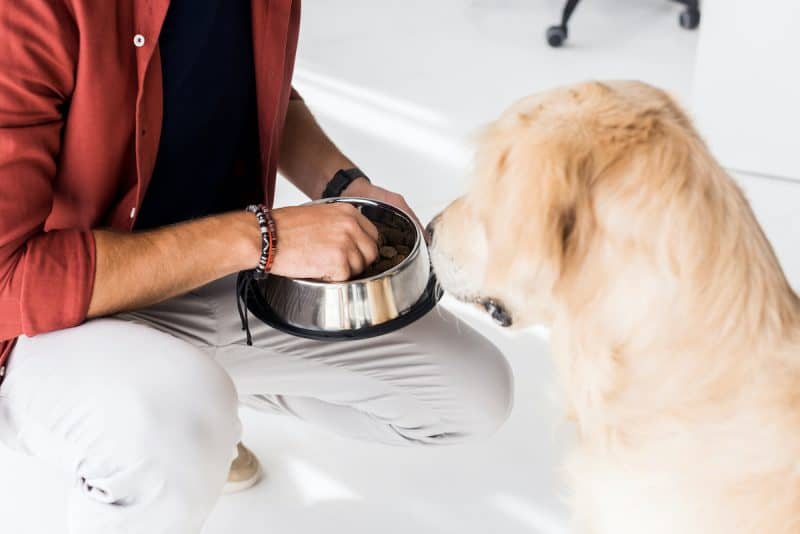
Always try to feed your dog several hours before heading out.
This is particularly important if your woofer gets car sick! If you feed him just before driving, motion sickness can cause him to throw it all back up. It won’t be pleasant for him, nor you, or your car.
As a rough guideline, hold off feeding your dog for at least three hours before a road trip.
Pack Lots of Treats, Toys, and Distractions
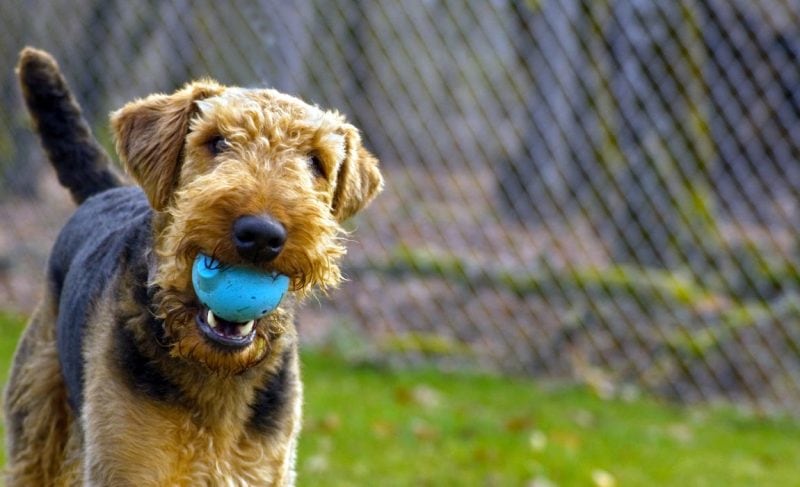
A long car journey can be a stressful experience for many dogs. You can help your pup feel at ease, and distract him from the journey itself, with treats, toys, interactive puzzles, and blankets covered in comforting scents.
With that said, if your dog suffers from motion sickness, it’s important to not give him too many treats in the car. You can break down a couple of treats into smaller pieces, and feed the pieces to him occasionally throughout the journey.
And as always, you’ll also want to make sure that any toys you provide him can withstand your dog’s teeth and paws.
Make a Checklist of Everything You’ll Need Before Leaving
It’s important to bring along everything you and your dog will need during your adventure. There is nothing worse than arriving at your destination, only to find out that you forgot your dog’s leash or water bowl.

At best, you’ll have to fork out some cash at a local store to buy these items again.
At worst, you’ll have to drive back home and collect them.
It can also be incredibly dangerous if you forget to pack enough water for your pooch.
Making a checklist of everything you’ll need ensures none of the above ever happens.
Among other things, you’ll want to bring all of the basic road trip supplies such as toys, leashes, poop bags, bowls, water, food, and harnesses.
You may also want to bring anything that’ll help keep you comfy during your outing. This may include things like a raincoat or umbrella, a change of footwear, and snacks (you deserve treats too!).
Monitor the Temperature
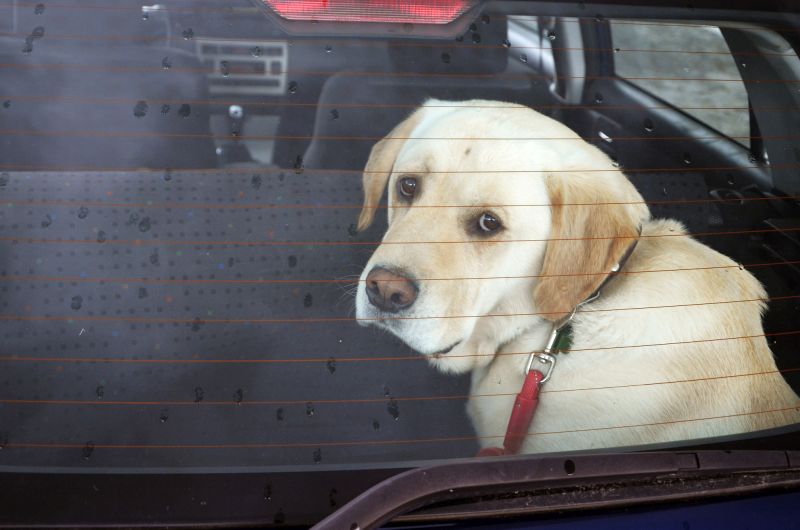
A hot car can be incredibly dangerous for your gentle giant.
Dogs have very few sweat glands and are less efficient at cooling themselves down than humans. Brachycephalic breeds and dogs with dense coats are particularly prone to overheating.
You’ll need to take every measure to keep the car as cool and comfy. You’ll also need to monitor the temperature, and immediately seek a vet if you see any signs of heat exhaustion in your pup.
We feel this goes without saying, but never leave your dog alone in a car on a warm day, even if the windows are open. It can become as hot as an oven and your pup will have no way to cool himself down.
Check out our review of the Waggle RV & Car Pet Temperature Monitor!
Bring Plenty of Food and Water
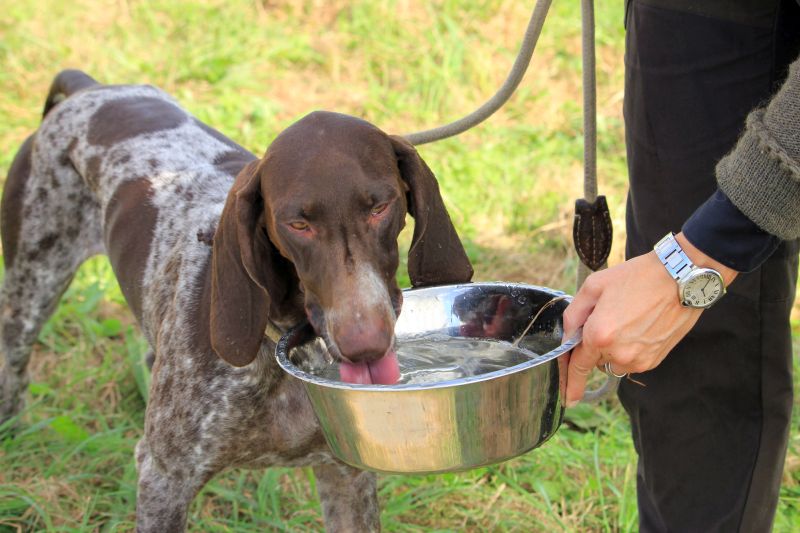
We can’t stress this enough: You need to be fully prepared and bring plenty of food and clean water for the journey. You should also store water in a shaded, cool area so it doesn’t warm up from the sun.
Wear Your Woofer Out Beforehand
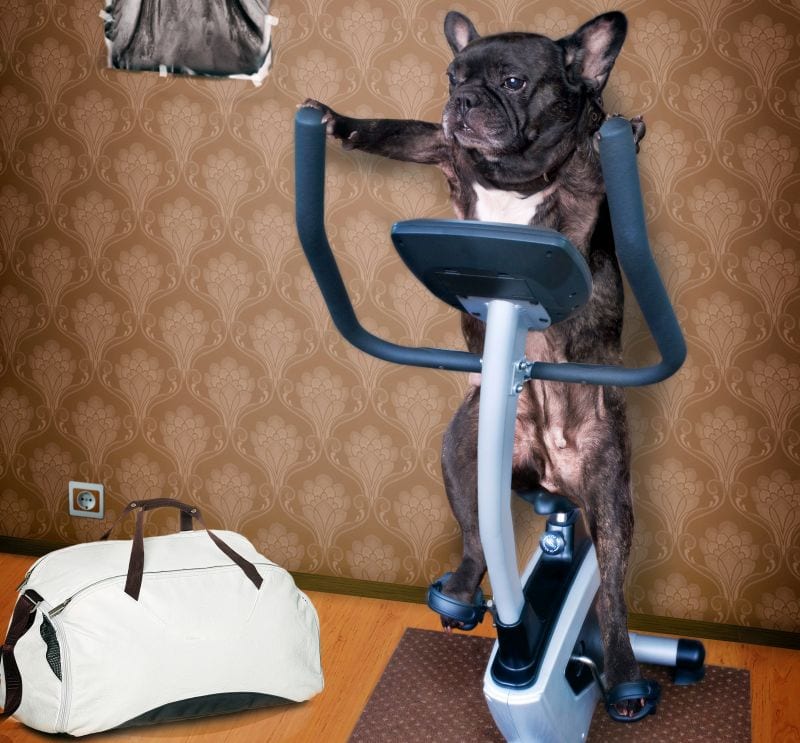
A dog brimming with energy is going to find it hard to settle down on a long road trip. That’s why it’s important to wear your woofer out beforehand; take him for a long walk and give him plenty of mentally-stimulating games to play with, like food puzzles.
Getting overwhelmed planning a road trip with Rover? You can always consider flying with your four-footer. Check out some of the most pet-friendly airlines to see if they’re heading where you are!
Traveling with a large dog can seem like an impossible feat, especially when your woofer isn’t exactly a quiet, patient passenger! But if you follow our tips above, while prioritizing your pup’s safety and comfort, the road trip is sure to be a happy experience for both humans and pooch.
Have you ever taken a road trip with your gentle giant? Was it a fun experience? Do you have any more travel tips to share? Let us know in the comments down below!
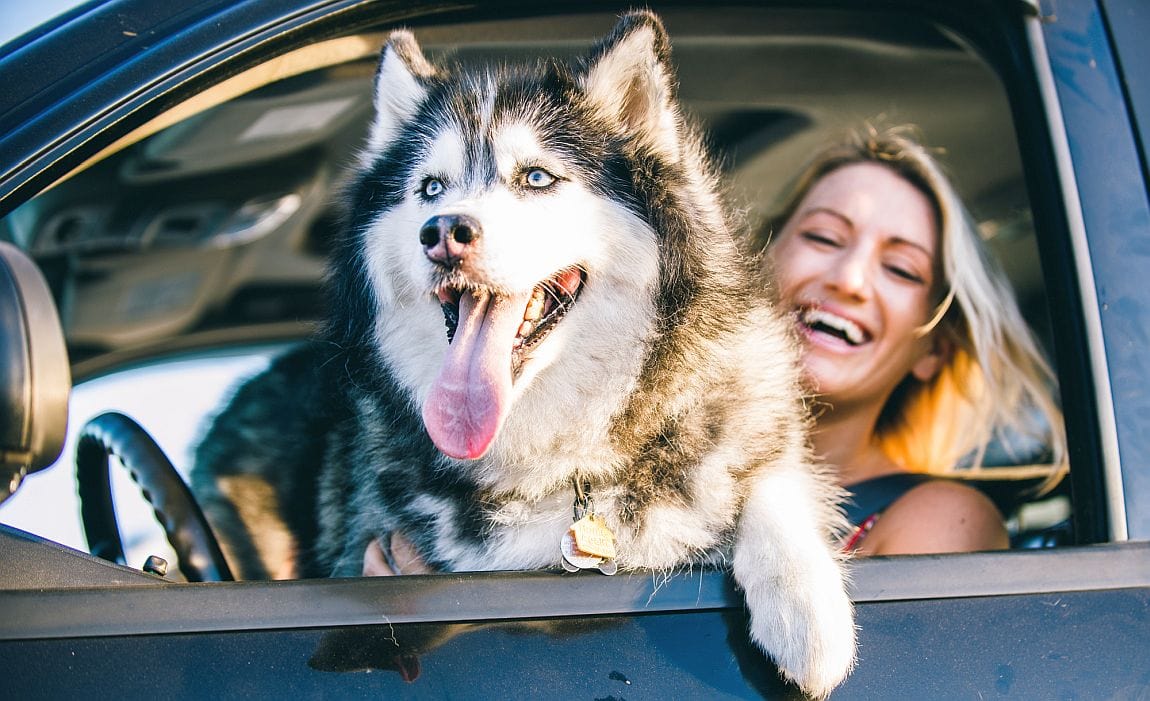

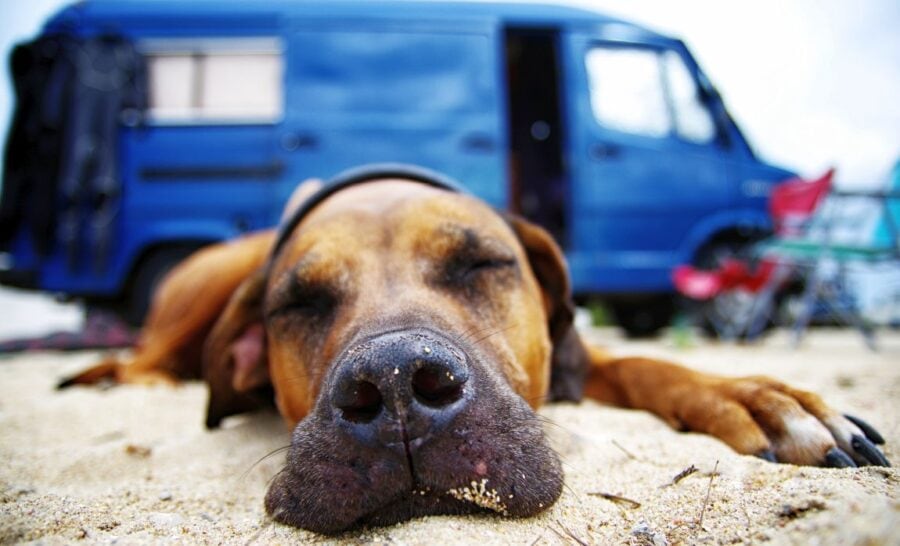


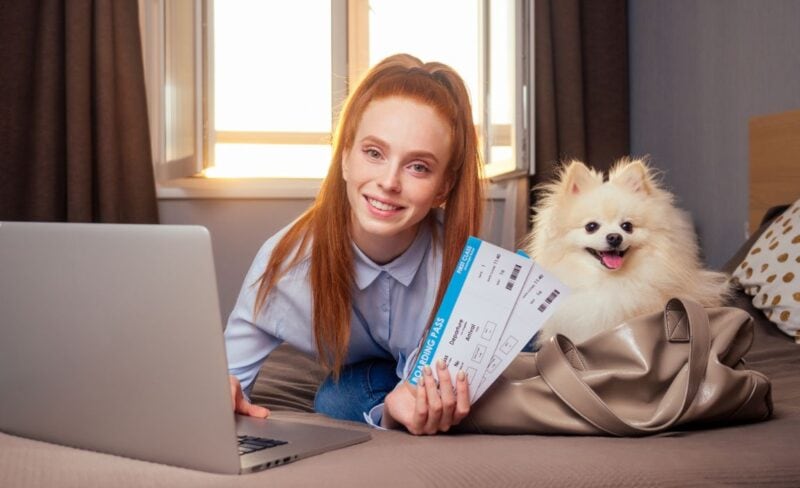
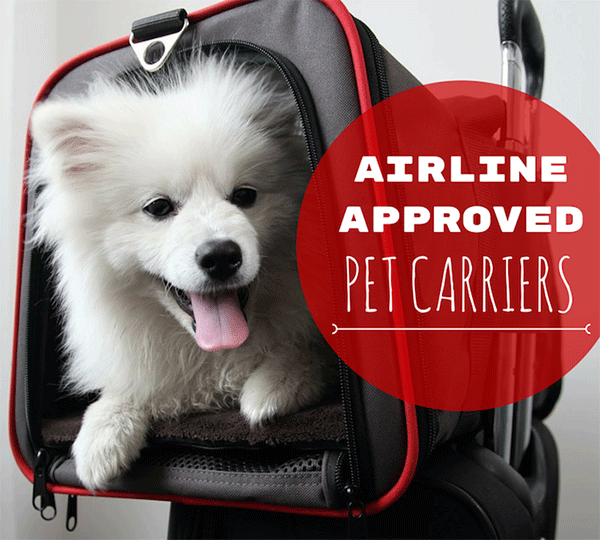
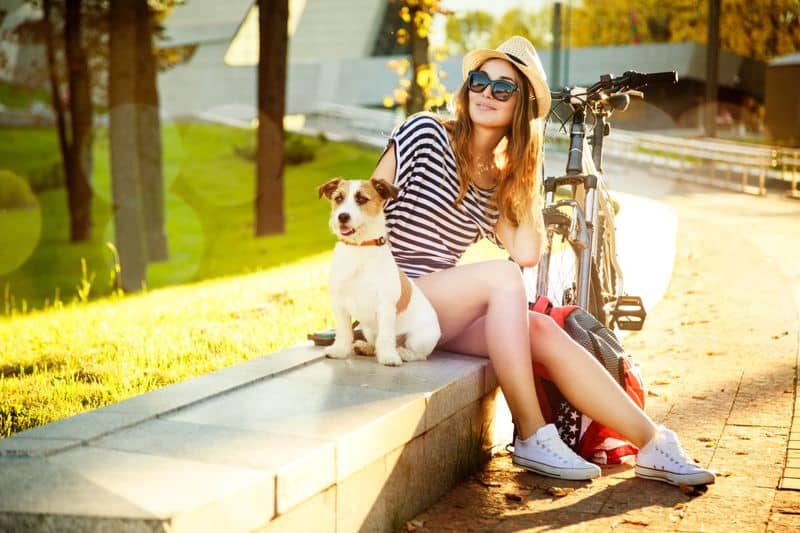
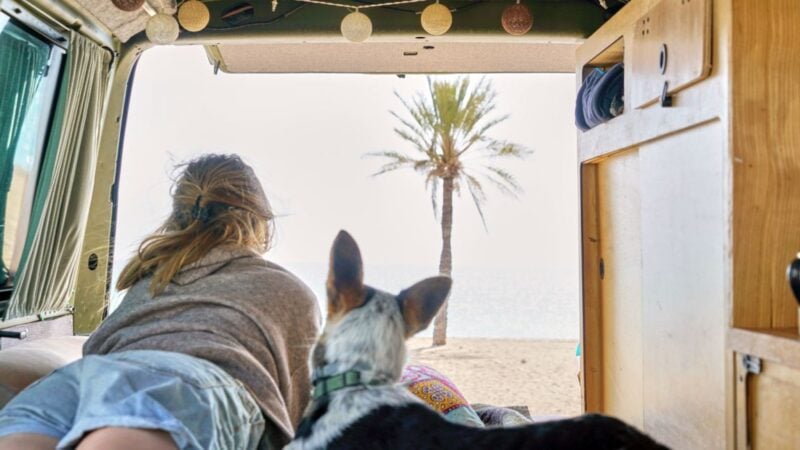
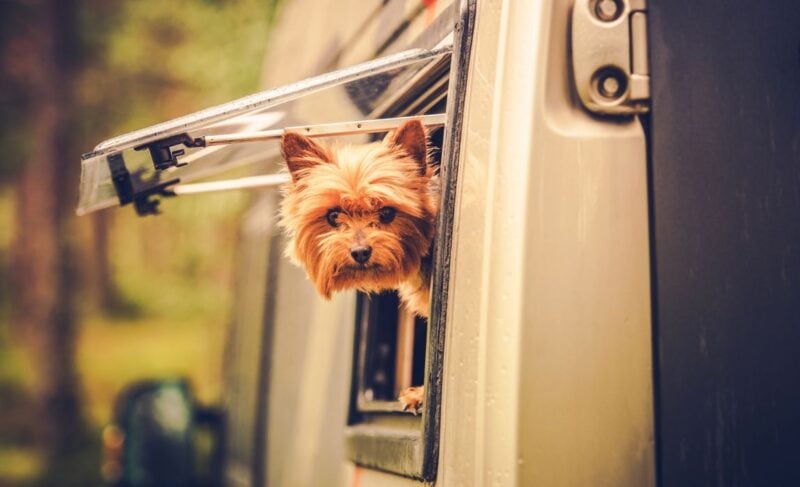
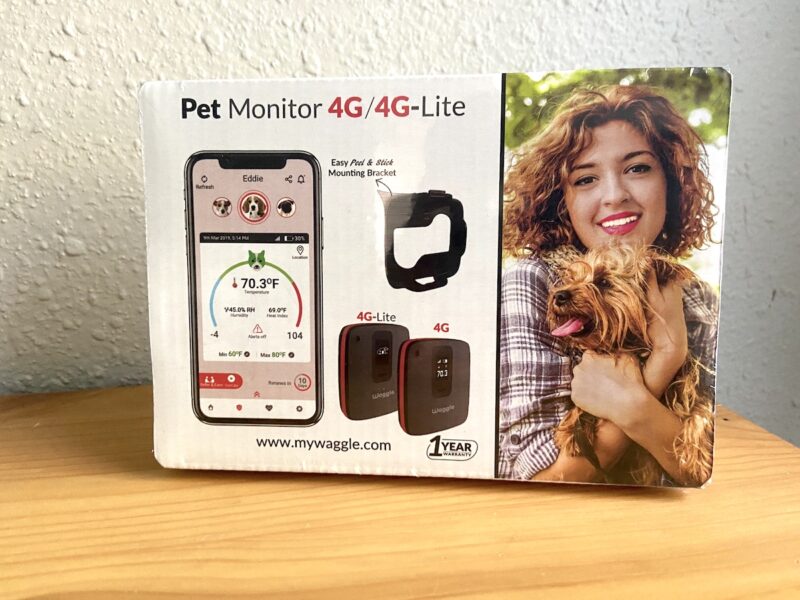
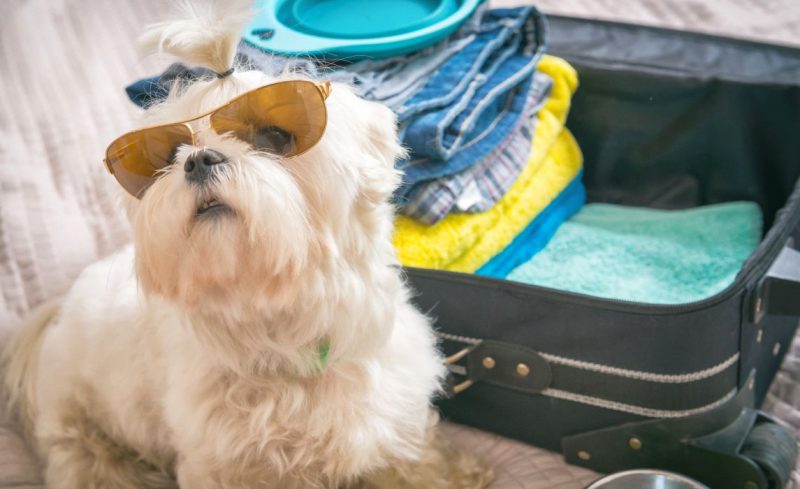

Leave a Comment